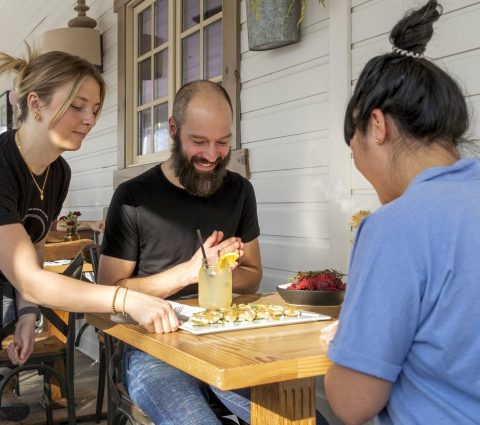- Things To Do
- Events
- Food & Drink
-
Places To Go
- Winnipeg
- Churchill
- Eastern Region
- Central Region
- Interlake Region
- Parkland Region
- Western Region
- Manitoba North
- Must-See Destinations
-
Itineraries
- Island Getaway on the Prairies
- Wheat City Wanderings in Brandon
- Escape to the water and the wild
- St. Boniface Winter: Passion and History
- Follow the path to a story in Neepawa
- Unleash your inner Viking this winter
- Explore Clear Lake this winter like never before
- Breathe in the Whiteshell this winter
- Go North for a boreal forest escape
- Treaty Areas
- Where To Stay
- Trip Essentials
- #ExploreMB Blog
Navigation Options
- FREN
- Things To Do
- Events
- Food & Drink
-
Places To Go
- Winnipeg
- Churchill
- Eastern Region
- Central Region
- Interlake Region
- Parkland Region
- Western Region
- Manitoba North
- Must-See Destinations
-
Itineraries
- Island Getaway on the Prairies
- Wheat City Wanderings in Brandon
- Escape to the water and the wild
- St. Boniface Winter: Passion and History
- Follow the path to a story in Neepawa
- Unleash your inner Viking this winter
- Explore Clear Lake this winter like never before
- Breathe in the Whiteshell this winter
- Go North for a boreal forest escape
- Treaty Areas
- Where To Stay
- Trip Essentials
- #ExploreMB Blog

Arborg's cutest museum will give you a glimpse into life in the good ol' days
Posted July 26, 2018 | Author Breanne Sewards
What do I love about village museums? Where do I start? There's no better way to get to know the history of a region than by wandering the streets of yesteryear, stepping into homes once inhabited by early settlers - recreated and/or preserved with thought and care for the pioneer's daily life. If you feel the same way I do, here's another museum to add to your list! The Arborg & District Multicultural Heritage Village is located along the shores of the picturesque Icelandic River in Manitoba's New Iceland, and tells the story of the Icelandic, Polish and Ukrainian pioneers who learned to live, work and build a community together. Here are 5 things you can't miss on your visit...
1. The Slipachuck Home: Ukrainian flair and clay oven
Built in Kimarno, Manitoba in the 1920s by Fred and Anne Slipachuck, the Slipachuck home is an example of a traditional Ukrainian abode. While the walls were held together only with wooden pegs, Ukrainian homes were known for their strong and sturdy houses that lasted the ages. The eye catching patterns and symbols - like the painted Easter eggs (pysanka) - evoke strong imagery of Ukrainian culture, while the layout of the home shows how the entire family slept on one floor, with a bombetil that slid out like a drawer for sleeping.
Close to the home is the traditional clay oven - a necessity for any Ukrainian homestead that wished to make fresh, delicious bread.
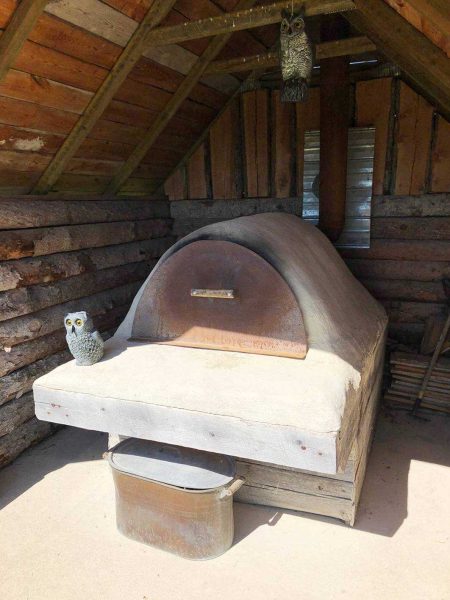
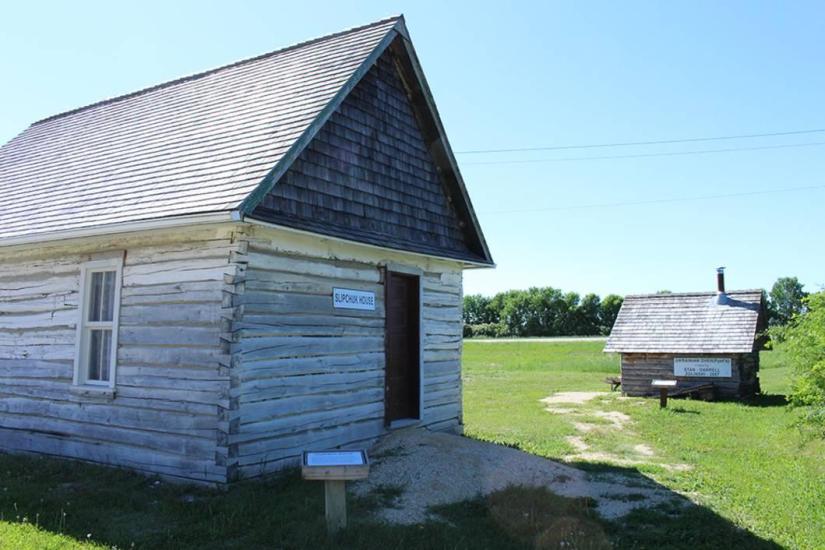
2. St. Demetrius Ukrainian Catholic Church: Crystal chandelier
When Ukrainian settlers moved to the homestead of Bjarmi (four miles north of Arborg), there was no church in the area, and settlers had to travel to Arborg for service or hold mass in their own homes. By 1921, St. Demetrius Ukrainian Catholic Church became the first church of the parish, postponed several years due to a conflict with the Ukrainian Orthodox. With enough pew seating for 25-30 people, the church is designed with beauty in mind - from the stained glass windows to the striking crystal chandelier - all originals to the structure.
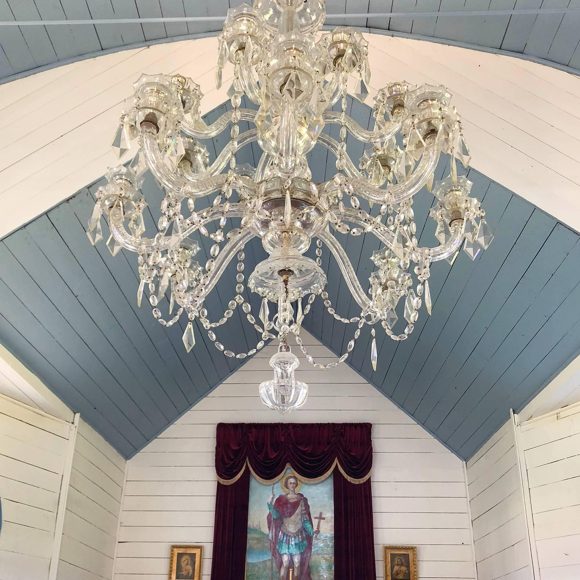
3. The Sigvaldason House: An inviting porch
The Sigvaldason House predates the Arborg railroad, which ages it to sometime before 1911. While it was first inhabited by the Oblate fathers of the St. Benedict's Convent, in 1920 it was sold to Bjorn and Lara Sigvaldason who moved with their family from Vidir. The spacious veranda was (and still is) a beautiful sight to behold and was a common sleeping place on hot summer nights.
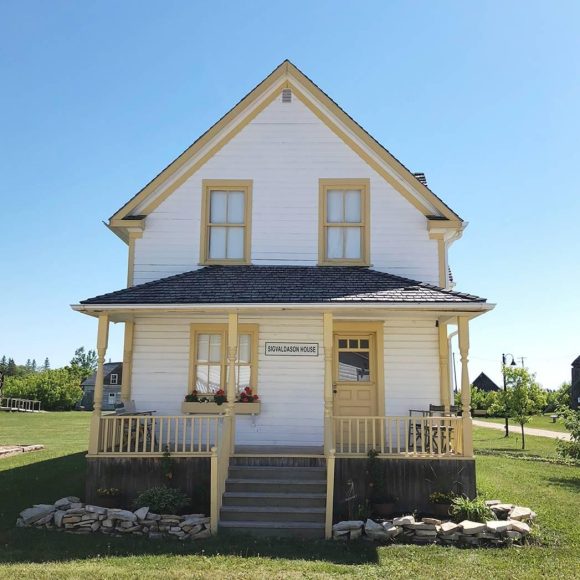
4: The Trausti Vigfusson House: Roman numeral logs
Trausti Vigfusson moved to the area known as New Iceland from (old) Iceland in 1898 with his wife Rosa Aldis Oddsdottir. The log house was originally built in the village of Lundi (now Riverton) but was dismantled and moved on a horse-drawn wagon to the Geysir district in 1902. Luckily, with a bit of foresight, the home was easy to rebuild as Trausti marked each hewn log with Roman numerals - the remnants of which can still be seen today.
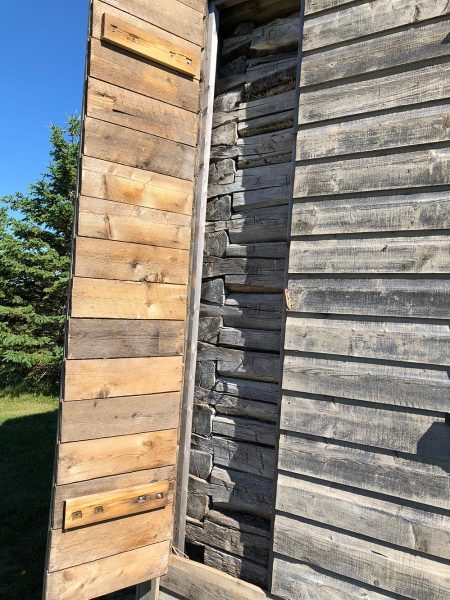
5: The John Hykawy Windmill: Made with local materials
What makes the windmill at the Arborg & District Heritage Village Museum unique? Ukrainian pioneer John Hykawy constructed the mill in a style known as a capp mill. The design was an eight-sided frame structure, with six sails, a windshaft and a roof assembly that would be turned into the wind. And except for the iron and belting, it was constructed entirely from local materials such as local spruce, poplar, granite boulders and tools that John tempered himself.

Visit the museum
Hours:
- Monday - Saturday: 10:00 a.m. - 4:00 p.m.
- Sunday: 12:00 p.m. - 4:00 p.m.
Admission:
- Adults (12 & over): $10
- Children 4-11: $5
- Children 3 & Under: FREE
Season:
- 2020 Season: June 3 to September 5
Please note, the museum closes for the following statutory holidays:
- Victoria Day (May 21st)
- Terry Fox Day (August 6th)



